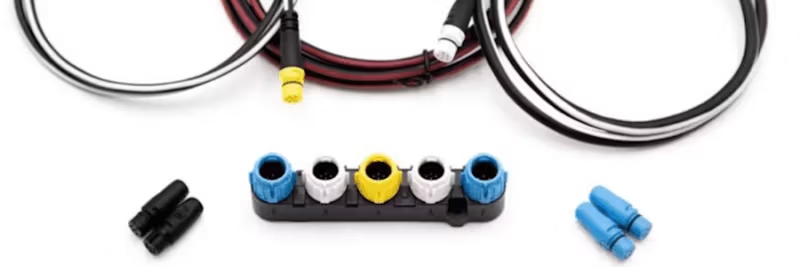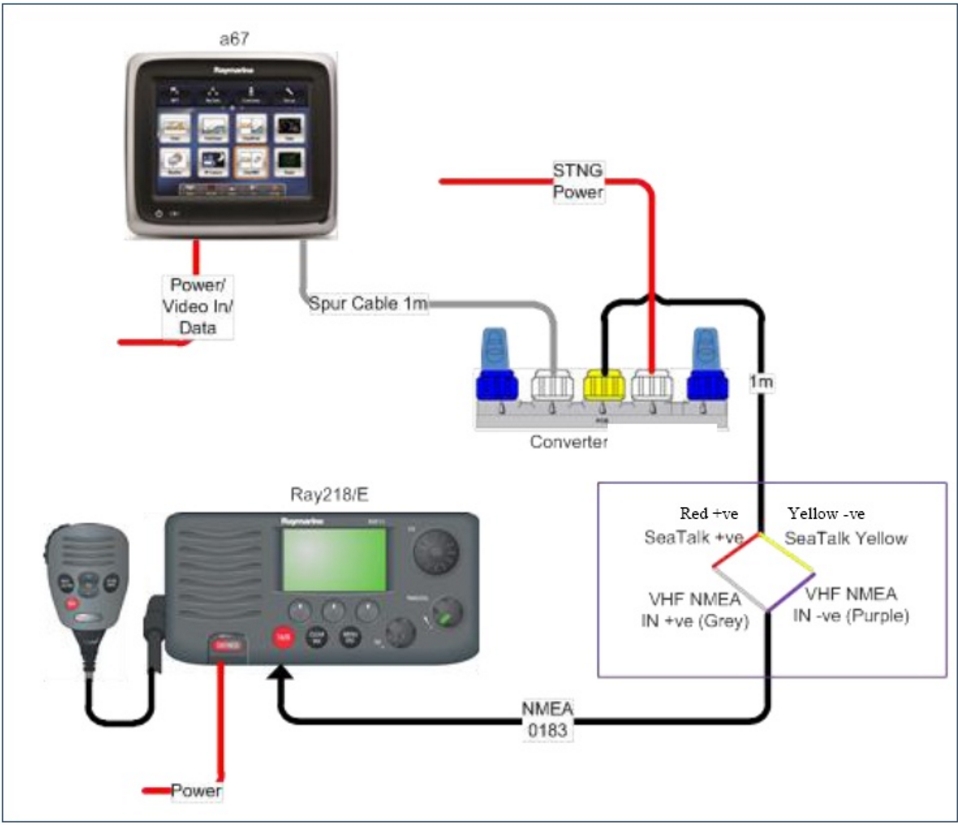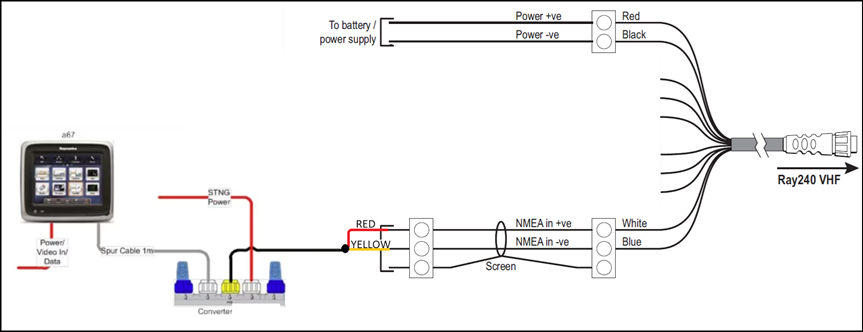Cart
Discount: 0.00 CZK
Discount: 0.00 CZK
Digital Skipper |1/04, 2024

After the introduction of GPS devices with SeaTalkng (STng) or NMEA 2000 connections, a problem arose: many customers had DSC VHF radios that required 4800 BAUD NMEA 0183 GPS data sentences. Raymarine solved this by introducing a feature in v1.21 SeaTalk to SeaTalkng Converter software that allows the converter to transmit a limited set of NMEA 0183 GPS sentences at 4800 BAUD. Additionally, the E70196 VHF NMEA 0183 to STng Converter Kit was launched.

The SeaTalk to SeaTalkng Converter transmits the following NMEA 0183 v4.10 sentences at 4800 BAUD:
After the update, the converter operates in Sense Mode during the first 20 seconds:

The diagram below shows how a SeaTalk to SeaTalkng Converter can deliver GPS data from an a67 MFD to a DSC VHF radio that requires NMEA 0183 data. The same solution works with Raystar 130 or other STng/NMEA 2000 GPS sources.

Many want to monitor DSC VHF radio at anchor without powering an MFD. Recommended solution: